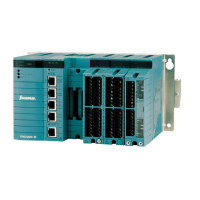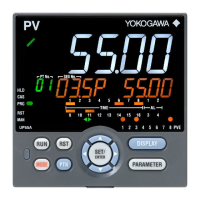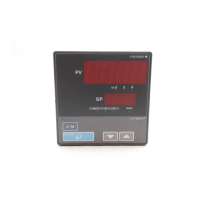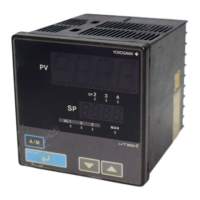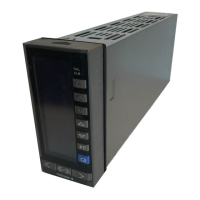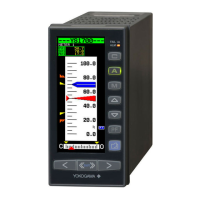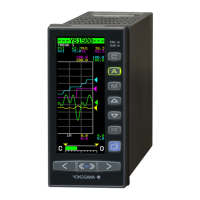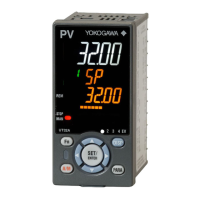IM 04L20A01-01E 1-45
1
Explanation of Functions
TLOG Computation
Determines the sum, maximum, minimum, average, and maximum – minimum (P–P)
values of the specified channel at specified time intervals. The interval is set by
timers.
• Timer mode
There are two timer modes: absolute mode and relative mode.
• Absolute mode
Timer expires at times determined from the reference time and the interval. The
reference time is specified by the hour (00 to 23).
Example 1: Reference time: 14:00
Interval: 12 h
The expiration time is set to 2:00 (2:00 AM) and 14:00 (2:00 PM).
Example 2: Reference time: 00:00
Interval: 10 min
The expiration time is set to 0:00, 0:10, 0:20, ..., 23:40, and 23:50.
For example, if the computation is started at 9:36, the time expiration
will occur at 09:40, 09:50, 10:00, and so on.
• Relative mode
The timer is started when the computation is started. The timer is repeated at each
interval. The timer is suspended while the power is lost.
Example: Interval: 00:15
The timer expires every 15 minutes after the computation is started.
• Timer to be used
Three timers are available. You can specify the timer to be used for each channel.
• Sum scale of the TLOG.SUM
In the sum computation (TLOG.SUM) of time series, data are summed over the scan
interval. However, for flow values that have units /s, /min, or /h, a simple summation
results in the actual value not matching the computed result, because the scan
interval and the unit of the input values are different. In these cases, the unit of the
data measured over the scan interval is converted to match the unit of the input
values and the computation is performed.
For example, if the scan interval is 2 s, and the input value is 100 m
3
/min, a simple
summation would add 100 every 2 s resulting in 3000 after one minute. However, if
the computing unit is set to /min, then 2 s/60 s is multiplied every scan interval before
the value is added giving a result that has a m
3
/min unit. The following equations are
applied. The scan interval unit is in seconds.
Off ∑(measured value)
/s ∑(measured value) x scan interval
/min ∑(measured value) x scan interval/60
/h ∑(measured value) x scan interval/3600
1.6 Computation Function and Report Function (/M1, /PM1 Option)

